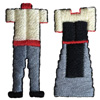 For centuries, Dutch people wore their traditional wooden shoes called “clogs” or “klompen”. This footwear seems odd and totally bizarre for outsiders, but it has a certain very important purpose: to protect the feet from mechanical damage and to help locals cope with the dirt and mud (typical for the damp Dutch climate). No cloth or leather shoes could do the deed as good as wooden clogs. But let’s see how these shoes are made by a famous Dutch craftsman Mr. Beekhuiszen from Eemnes, the Netherlands. He makes every pair by his hands and the simplest tools, rather than industrially carve them.
For centuries, Dutch people wore their traditional wooden shoes called “clogs” or “klompen”. This footwear seems odd and totally bizarre for outsiders, but it has a certain very important purpose: to protect the feet from mechanical damage and to help locals cope with the dirt and mud (typical for the damp Dutch climate). No cloth or leather shoes could do the deed as good as wooden clogs. But let’s see how these shoes are made by a famous Dutch craftsman Mr. Beekhuiszen from Eemnes, the Netherlands. He makes every pair by his hands and the simplest tools, rather than industrially carve them.
Read also: Dutch clogs making. How wooden klompen are industrially carved
In the traditional way of making wooden shoes, one starts with a block of water-saturated poplar wood.
With an axe, the block if roughly shaped into something resembling a shoe.
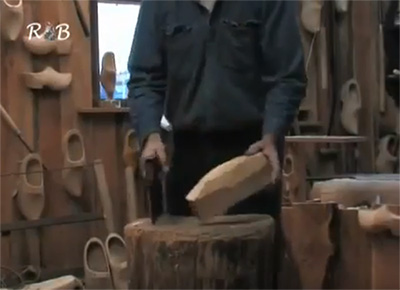
By using the stock knife – a special long-handled blade – the rough shoe gets its final author shape.
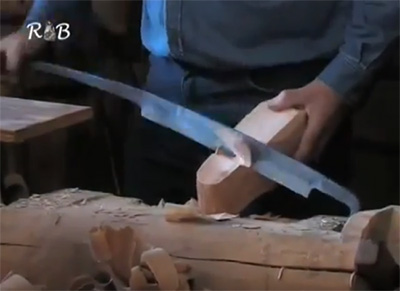
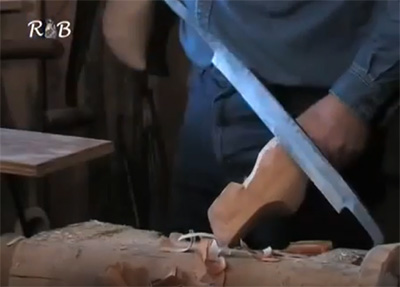
It looks easy but it requires a lot of experience and great skill to do this in a proper way.
Now, it is the turn of the spoon drill to make the inside of the shoe. The trick is to know how far the drill can go before it makes a hole in the top or the sole and makes the whole thing useless.
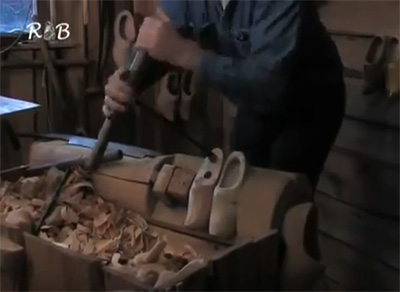
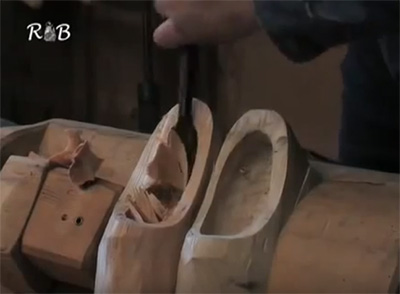
During a 12-14-hours working day, the traditional wooden shoe makers can produce up to 3 pairs of clogs. It’s clear that none of them could become rich with this kind of production.
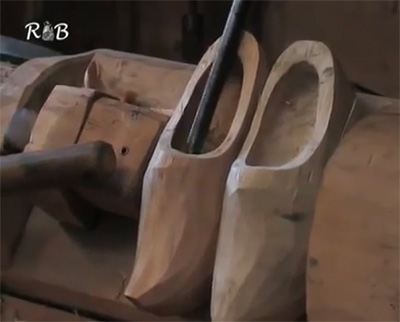
Rich clients had their wooden shoes decorated with carved figures or had them painted in bright colors.
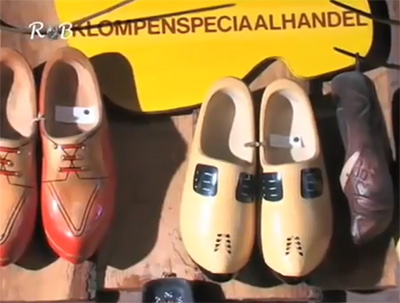
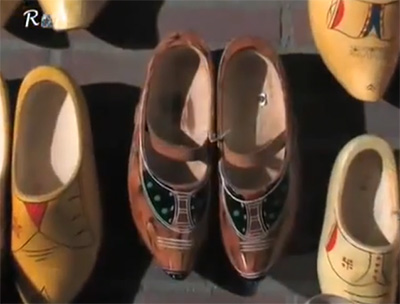
As today these clogs became a famous souvenir for the tourists in the Netherlands, they are made colorful, cheerful, and richly decorated.
Read also: Dutch clogs making. How wooden klompen are industrially carved
(c)
